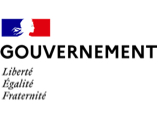Reception, accommodation and integration facilities
Understanding and innovating in accommodation structures
Accommodation structures play a crucial role in supporting and accompanying people in precarious or vulnerable situations. These structures are varied and meet specific needs ranging from emergency accommodation to long-term housing arrangements.
Types of accommodation structures
Centres d'Accueil pour Demandeurs d'Asile (CADA)
CADAs are structures dedicated to asylum seekers. They offer temporary accommodation and social and administrative support services, aimed at helping residents with their asylum application procedures. These centers are essential for providing initial support to new arrivals, offering them a safe space while they undertake the necessary administrative steps.
The role of CADAs is also to facilitate the integration of asylum seekers into society. This includes language courses, help with access to employment, and adapted health services. For innovators, there are many opportunities to improve these services, including the integration of technologies for case management and online educational services.
Résidence Sociale and Maison Relais
Social residences and maisons relais offer accommodation to people in difficulty, often excluded from traditional housing solutions. They are designed to be long-term solutions, promoting residents' autonomy through appropriate social support. These structures aim to provide a stable living environment, while allowing a degree of independence.
Maisons relais, in particular, are non-medical establishments that take in people in situations of severe exclusion. They offer a semi-collective living environment, enabling residents to regain stability and rebuild their social lives. Social residences, meanwhile, are often offered to precarious workers or single-parent families.
Centre d'Hébergement et de Réinsertion Sociale (CHRS)
CHRS are accommodation structures aimed at the social reintegration of people in difficulty. They offer temporary accommodation, as well as intensive social follow-up to help residents regain social and professional stability. CHRS play a key role in the fight against social exclusion, offering reintegration programs that include vocational training, personal development workshops, and psychological support services.
CHRSs often face major challenges such as a lack of financial and human resources, which limits their ability to offer personalized support. Innovators can contribute by proposing solutions to optimize available resources, such as setting up digital platforms for monitoring residents and coordinating services.
Other reception centers
- Emergency accommodation: these centers offer an immediate solution for homeless people. They are often the first step before referral to more permanent structures. Emergency accommodation needs to be flexible and responsive, able to respond quickly to the needs of its residents.
- Centres Provisoires d'Hébergement: Intended for people benefiting from international protection, these centers provide temporary accommodation with support to facilitate their integration. They offer similar services to CADAs, but for a different population, requiring adapted approaches and services.
- Foyers de Travailleurs Migrants: These hostels provide specific accommodation for migrant workers, enabling them to have stable housing while being socially supported.
Challenges and Opportunities for Innovation
Improving Autonomy and Adaptability
For each accommodation facility, the aim is to promote residents' autonomy. Innovators can contribute by developing tailored support programs and integrating technological solutions to improve the efficiency of social services. For example, the use of digital platforms to manage services can facilitate access to information and improve coordination between the various players.
Optimizing Services and Devices
Housing facilities must constantly optimize their services to meet the evolving needs of their residents. Innovation can take the form of new methods of support and the use of technology to monitor files and improve orientation and integration facilities. For example, mobile applications could be developed to help residents access educational or professional resources, or to facilitate communication with social workers.
Development of Information Sheets
To help both residents and professionals, the creation of a detailed information sheet per facility can be very useful. This service could include information on the services offered, admission criteria, steps to follow, and useful contacts. A centralized database of these sheets could also be developed to facilitate access to information and improve the transparency of services.
The Importance of Coordination between Structures
Coordination between the various accommodation structures is crucial to ensuring coherent, ongoing care for people in precarious situations. A well-coordinated network makes it easier to direct residents from one structure to another as their needs evolve, maximizing their chances of social and professional reintegration. Innovators can play a key role by developing integrated management systems that enable better communication and coordination between the various structures.
Housing structures play a vital role in supporting people in difficulty
For innovators in the medical-social sector, there are many opportunities to improve these structures and their services. By optimizing residents' autonomy, developing more efficient arrangements, and ensuring better coordination between centers, it's possible to make these structures even more effective and tailored to the needs of the people they serve. Innovation in these areas is essential if we are to offer dignified and appropriate accommodation and housing, promoting social inclusion and autonomy for everyone.
Reception, accommodation and integration is a type of structures of the medico-social and social sector.

